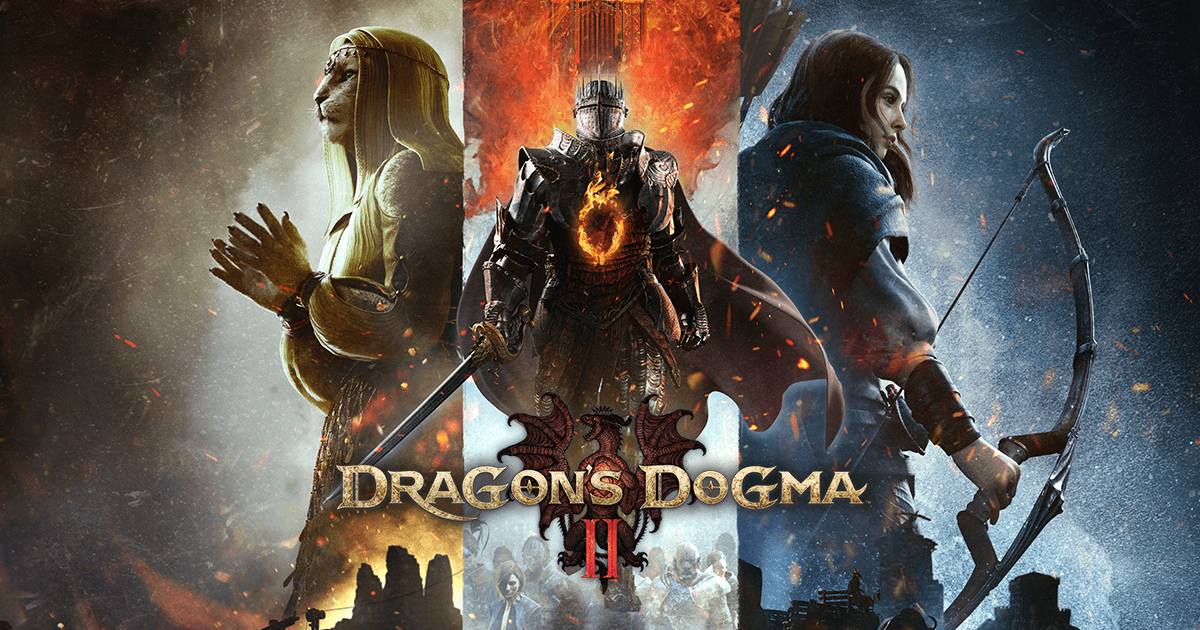You'll love it if:
- You are a fan of the first installment of the series.
- You enjoy non-linear gameplay and exploration.
- You like tackling big bosses and epic battles with large enemies.
Not for you if:
- You NEED frequent fast travel and hate walking in game.
- You’re not a fan of action combat and want a precision based “souls-like” experience
First and foremost, my absolute biggest complaint about Dragon’s Dogma 2 is the fact I had to stop playing to take the time to write this review. While personal opinions and experiences may differ, I, for one, am having an absolute blast with the game. While the technical state of the game is indeed a bit troubling on launch, the gameplay may not be for everyone, and there is the outrage of the micro transaction out on launch, I still find myself having fun.
The highly anticipated sequel to the original from 2012 overall improves on what made the original such a fan favorite and keeps to its own identity without trying to pretend to be something it’s not. Building on what we experienced during early access, I’ll be doing my best to provide a detailed review of our experience with Dragon’s Dogma 2.

TL;DR
Dragon’s Dogma 2 is a fun combat-oriented action RPG that builds on what made the original such a cult classic. The entire game experience was extremely enjoyable for what it was, but objectively speaking, there is a lack of enemy variety, a lacking story in the latter half, and moderate performance issues. Dragon’s Dogma 2 is an overall fun experience however and while some may dislike the design space of how players traverse the world, for those who enjoy immersion and exploration, this is a great addition to any collection.
Dungeons and Dragons and… Politics?
For those familiar with the original, the game treats you to a small surprise early on. In Dragon’s Dogma, you were playing as the Arisen, chosen to slay the dragon and save the world. At the start of Dragon’s Dogma 2, you find yourself learning that the Arisen is the rightful ruler of the kingdom of Vermund, but you are found in a prison and labeled as a pawn. This is, of course, later revealed to be part of an evil plot and you truly are the arisen, but it was nice to enter the game already wondering what is going on.
Very early in Dragon’s Dogma 2, you learn that there is a false Arisen on the throne and that you were conspired against so that the current family in power could remain in power. As the Arisen, you are the rightful heir to the throne, and so you were stripped of your memory and sent far away as a slave.
After a daring escape from your prison camp, you are found by soldiers and taken in. Word gets around that a person is claiming to be the Arisen while there is an Arisen on the throne, and this is a crime punishable by death. From here, your journey begins to regain the throne, find allies, and gain power so that you may defeat the Dragon.
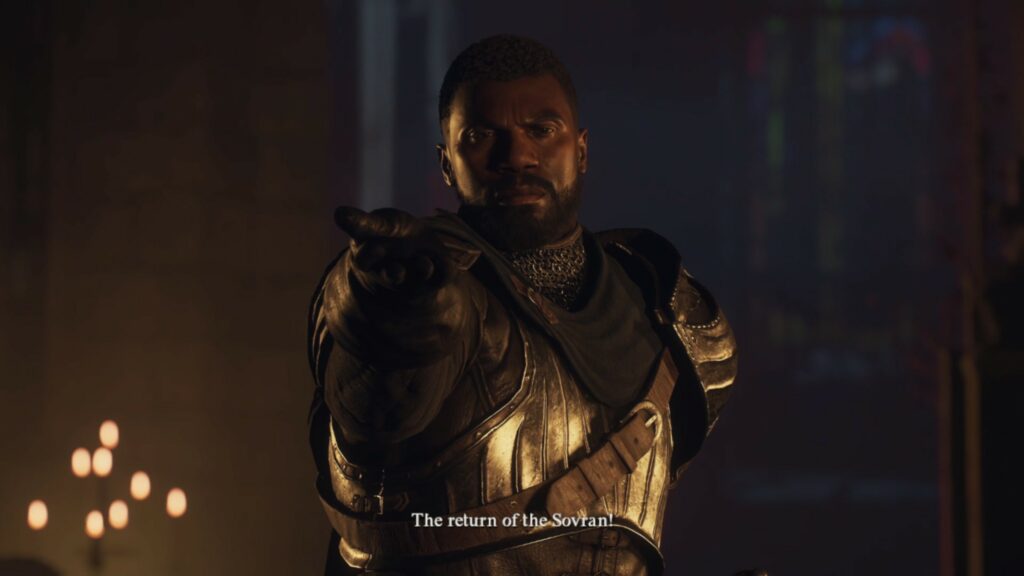
The Plot Thickens
The story overall begins very powerfully and you’re immersed in the campaign from the get-go. The political intrigue and hidden agendas of the characters take clear inspiration from popular culture and build upon the lore set from the original game. While it won’t be the overarching masterpiece of connecting storylines and plots as we saw in Baldur’s Gate 3, Dragon’s Dogma 2 uses the plot to set the tone for the first half of the game and immerse the player into their role as the usurped Arisen.
The side content in Dragon’s Dogma 2 is inconsistent in my opinion. Some really amazing side quests really build up the lore of the world and develop the player’s understanding of the world, and then there are the usual fetch quests and escort missions. As a whole though, I do really enjoy what side content there is and how these quests are given to you.
Most side missions are given simply by wandering the world, mainly the central hub cities and towns. NPCs will come up to you and talk to you, identifying you as the Arisen, and ask for help. Other quests are given to you by just talking to a random NPC and learning what they need. And the best part is these side missions are often time-based, and progress on their own if you do not get involved. If you need to rescue someone from a pack of wolves, you best hurry over. Resting a night at an inn is a sure way to make sure you don’t get to them in time.
Many of the NPCs have their own lives and ongoing activities, and how they interact with the player really makes the world feel alive and responsive to what you do. Even the oxcarts can be found traveling their routes daily and you can hop on any time if you encounter one. The world and its cities grow and evolve as you do in the game.



Progression
Dragon’s Dogma 2 has various progression systems to help you gain power on your quest to defeat the eponymous enemy. From your classic leveling and stat increases to various currencies to improve skills and abilities, there are many ways to build your hero and power up throughout the game.
The most obvious way of increasing your power is through gaining experience points and leveling up. This process is very straightforward, increasing your base stats to provide an almost linear growth. What this also does is increase the level of pawns you can recruit from the rift, but more on that in a moment. The vocation you are in when you level up also influences the growth of your stats and which specific stats are increased by which particular amounts.

Vocations
The next step in character progression is the Vocation system. Vocations are set on what equipment and weapons you can use. Dragon’s Dogma 2 has ten separate vocations with the four available at the start, two unlockable vocations early in the story, and four more hidden vocations to unlock through exploration. One important note is that the advanced vocations, and to an extent the other four discoverable ones, are not strictly better than the ones you begin with. These vocations are different and serve different purposes and perform tasks differently. Many believe the starting Mage and Rogue vocations to be among the best vocations to choose from.
Vocations also can be leveled up in multiple ways. Firstly, as you fight, you gain rank in the currently equipped vocation. As your ranks increase you gain access to more skills and augments that you can unlock with Discipline points, points you obtain also by killing monsters. These can be spent at certain locations to unlock combat skills as well as augments. The cool thing about augments is that these are passive abilities that once unlocked in one vocation can be equipped to your character even when you’re using another vocation.

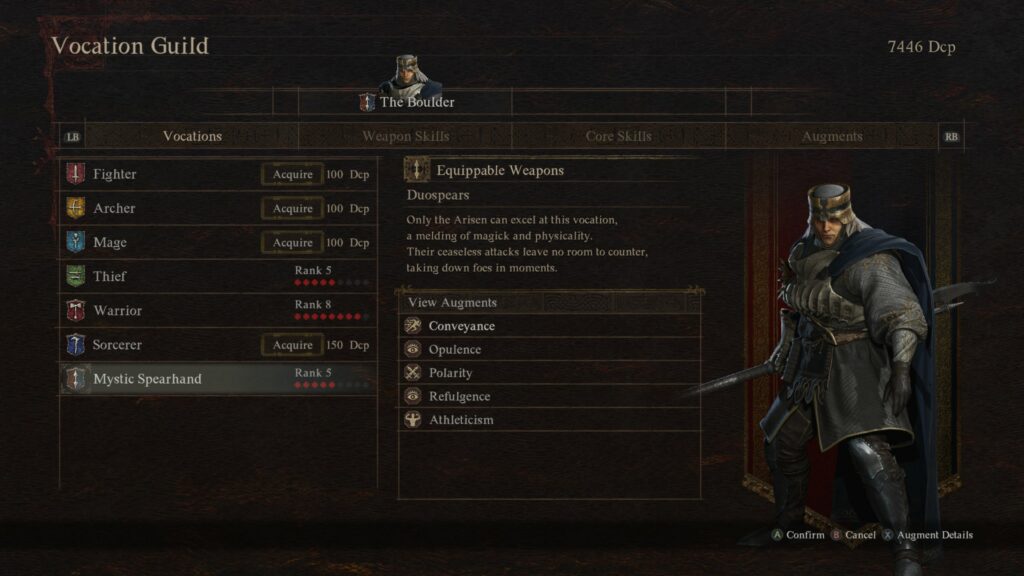

Armed and Dangerous
As you journey across the land of Dragon’s Dogma 2, you’ll be moving essentially east to west along the coastline, hitting major towns along the way. As you move to later areas of the game, you will begin to find better gear and armor to utilize. This progression of equipment in this game is very linear, often simply moving to a new area will give you better equipment at a higher price. There are also hidden weapons that can be found through adventuring that offer unique boons and elemental damage.
One key feature in this game is the enchanting of your gear. Each of the major races present in the game can enchant your equipment in their unique smithing style. For example, in Vermund you’ll have your equipment be upgraded in a more balanced manner while in the elven lands upgrading your equipment will focus more on the magical attributes rather than the physical. Additionally, in the end game, you’ll have the ability to unlock an advanced final augment that uses Wyrm Crystals you obtain from fighting the various dragons. So essentially the best gear you can use is likely the gear from the highest-level area with the max level enhancements. Fairly straightforward but satisfying nonetheless.

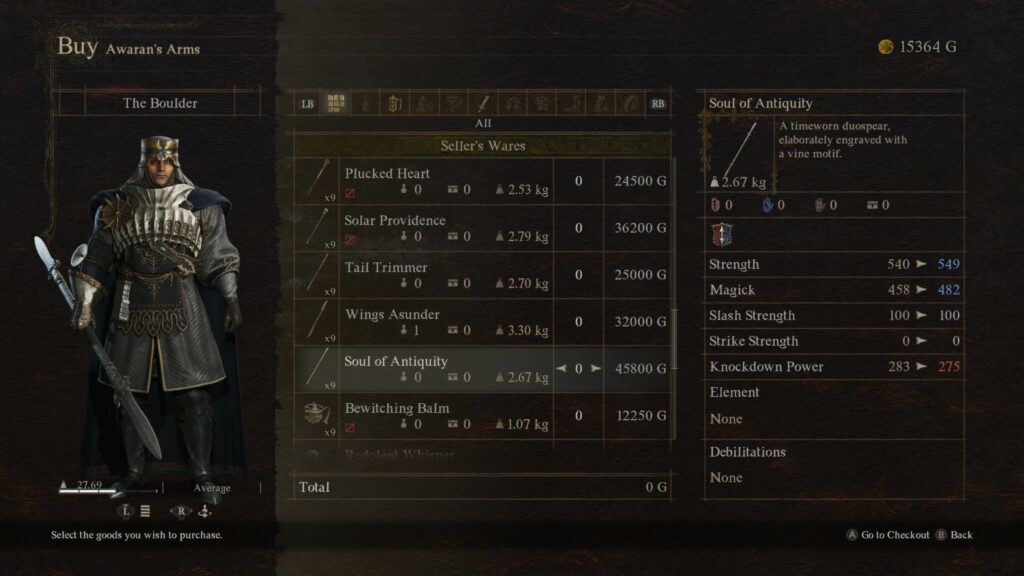
Pawn Stars
The final bit of progression relates to your Pawns. As the Arisen in Dragon’s Dogma 2, you lead the Pawns as your followers. Your party throughout the game will consist of you and your “main pawn” that will stay with you. Additionally, you will be able to recruit two other pawns either online from other players or from preconstructed Capcom pawns. The online pawns function as the multiplayer for Dragon’s Dogma 2, allowing you to recruit other players’ main pawns as well as send your pawn out with quests for rewards.
As you level up, the pawns you gain access to gain more power and levels as well. You can also filter to search for specific pawn classes you want as well as levels. You can customize your party however you like, while only having to manage equipment for your character and your own “main” pawn.

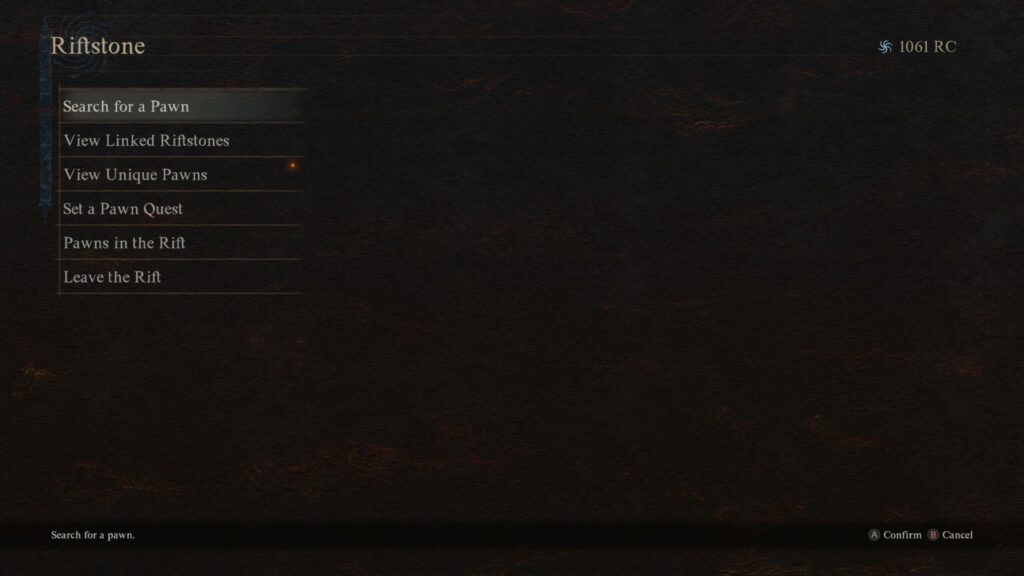
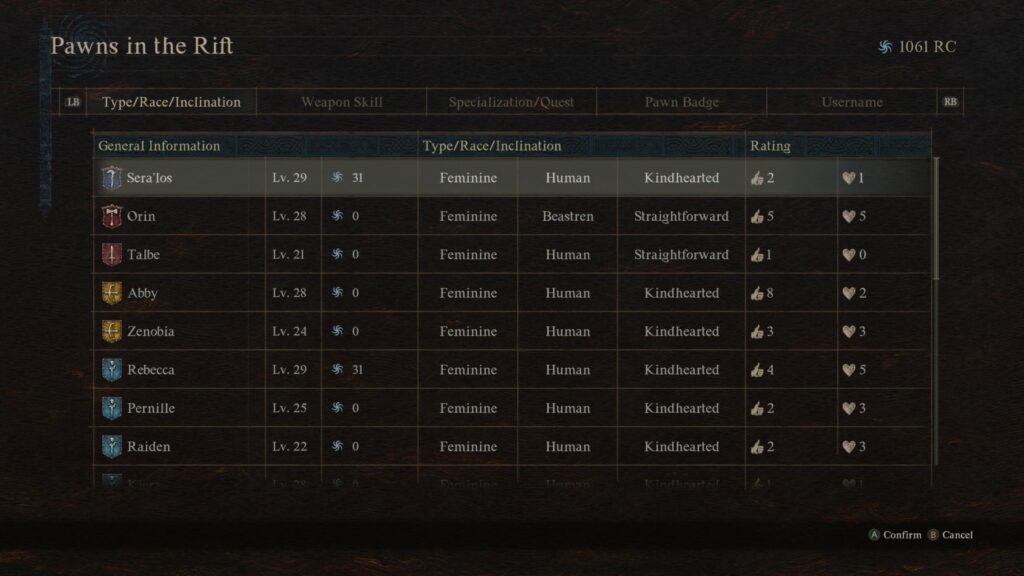
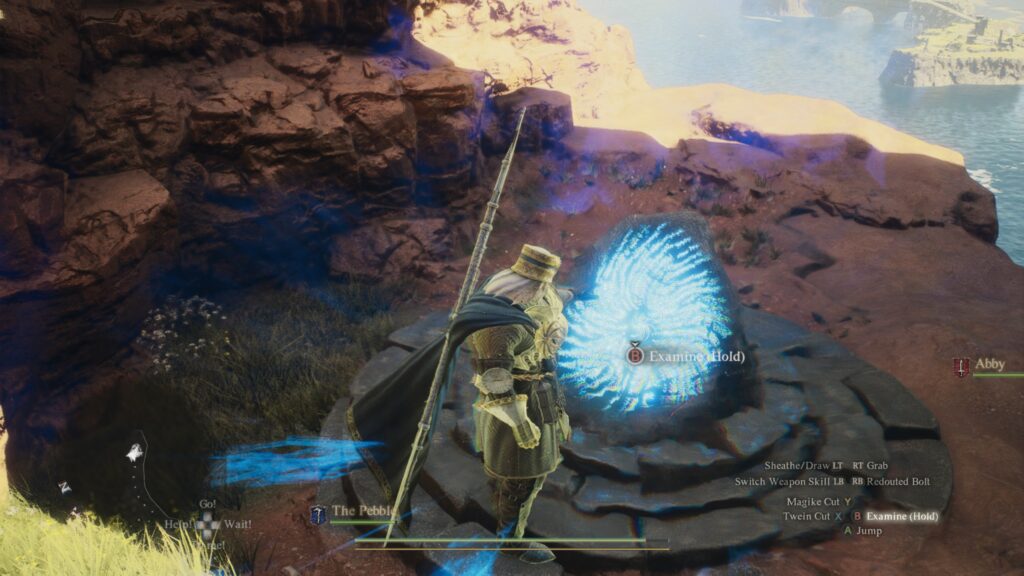
Ox Cart Racing
The world of Dragon’s Dogma 2 is vastly larger than that of the original game. While it may not compare to the likes of The Witcher or Elden Ring, it’s very much explorable and open to discoveries. If I had to compare the map of Dragon’s Dogma 2 to those of other games, the open world feels much like that of Baldur’s Gate 3.
Instead of going anywhere and everywhere in a direct line or as short a route as possible, the world is very much a curated experience with large paths that lead to separate locations. With mountains and bodies of water functioning like walls or barriers, the roads between large open locations could be seen as connecting corridors. Now that’s not to say the game isn’t explorable. I believe this curated experience helps the open world quite a bit.
Because you can wander in circles aimlessly, traversing down paths – no matter how hidden – will always lead you to secrets to be discovered, hidden locations, and a great deal of side content. These corridors are also by no means straight paths as the analogy would imply. These roads are winding and large, and have their features to explore and discover. Groups of enemies, wandering bosses, hidden treasure, and puzzles, to name a few.
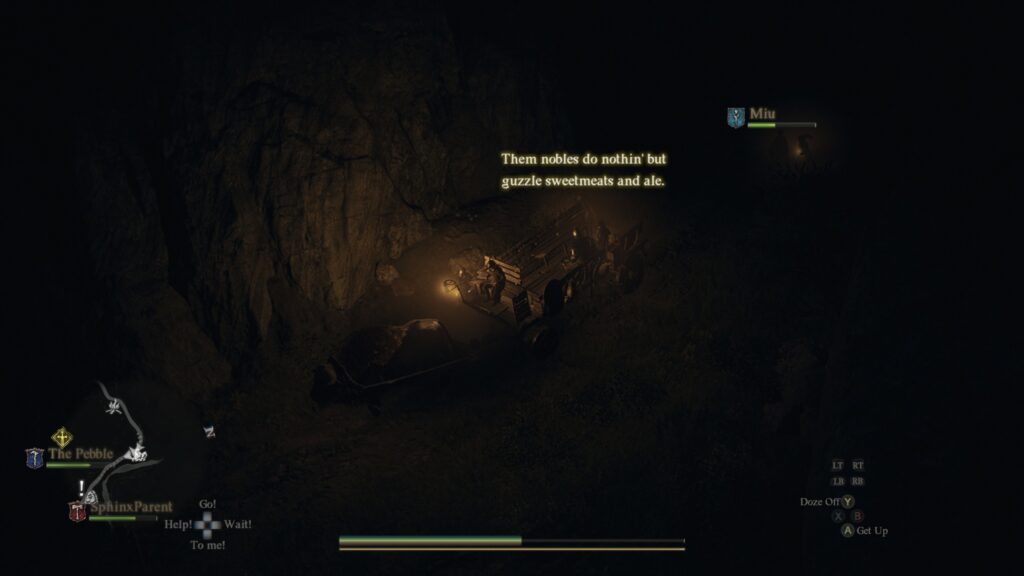
Life In Dragon’s Dogma 2
Dragon’s Dogma 2 is full of life and character, and the NPCs help amplify this feeling. As you’re wandering around the world, you’ll see people and monsters alike going about their routines and interacting with the world around them. Side quests have multiple endings and change NPC behavior based on the outcomes as well. Pawns can be seen traveling the roads, fighting monsters, and some will even approach you to join your party.
You’ll find merchants wandering with guards, soldiers patrolling, and villagers trying to get home. All these NPCs have a chance to approach you and give you a random quest to follow or an objective to complete. Monsters too have their unique interactions, wandering around hunting, getting into fights with each other, or guarding encampments. One unique thing is that the Griffins even hunt smaller monsters and you can see them interact with the world. Even the Ox cart that’s used to take you from place to place will be seen on its daily route and you can hop on at any time.
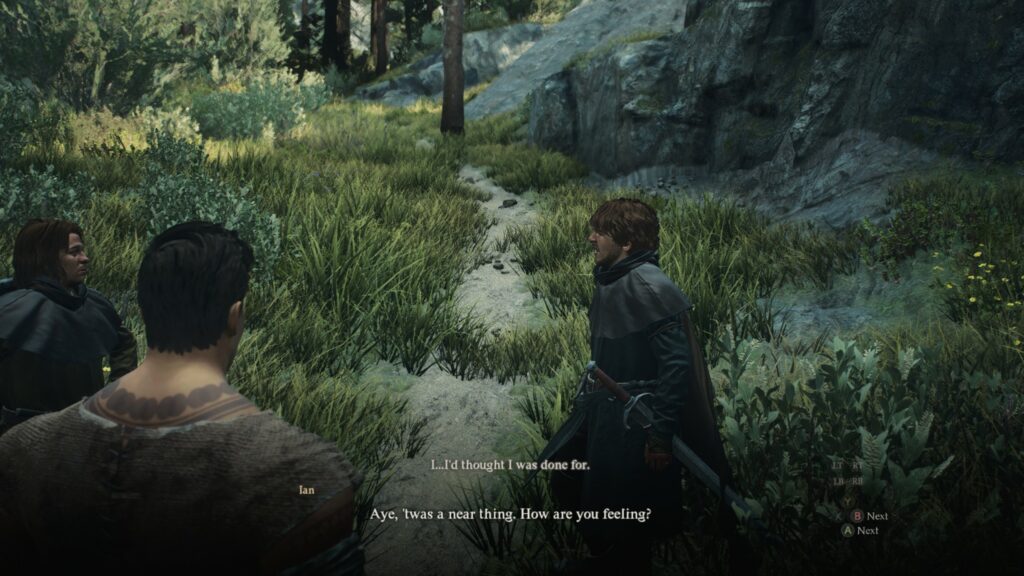
Not-So-Fast Travel
One of the most controversial aspects of the Dragon’s Dogma series, and especially so with Dragon’s Dogma 2, is the restrictions on traversing the world. Dragons Dogma 2 will have you primarily walking from place to place and in between social hubs. There are ways to skip the long treks between settlements but these are few and far between.
The most prominent of the methods are the Ox Carts you’ll find at the entrances of certain towns and cities. These Ox Carts leave at certain times of the day but are easily acquired by simply going to the Ox cart stop and pressing a wait prompt to fast-forward time until the carts are due to leave.
These Ox carts do leave their starting points at a certain time each day and usually arrive at their designated locations at a set time as well. They also travel in real-time, meaning that if you’re on the road at a specific time you may even come across these carts traveling and can hop on for a ride the rest of the way.
Ox Carts in Dragon’s Dogma 2 also travel only between set locations. For example, to travel to Vernworth from Melve, there is a specific cart that travels only that path. The same can be said for traveling from Vernworth to the Checkpoint Rest Town. So if you want to travel from the Checkpoint Rest Town to Melve, you’ll need to take two separate Ox Cart Journeys.
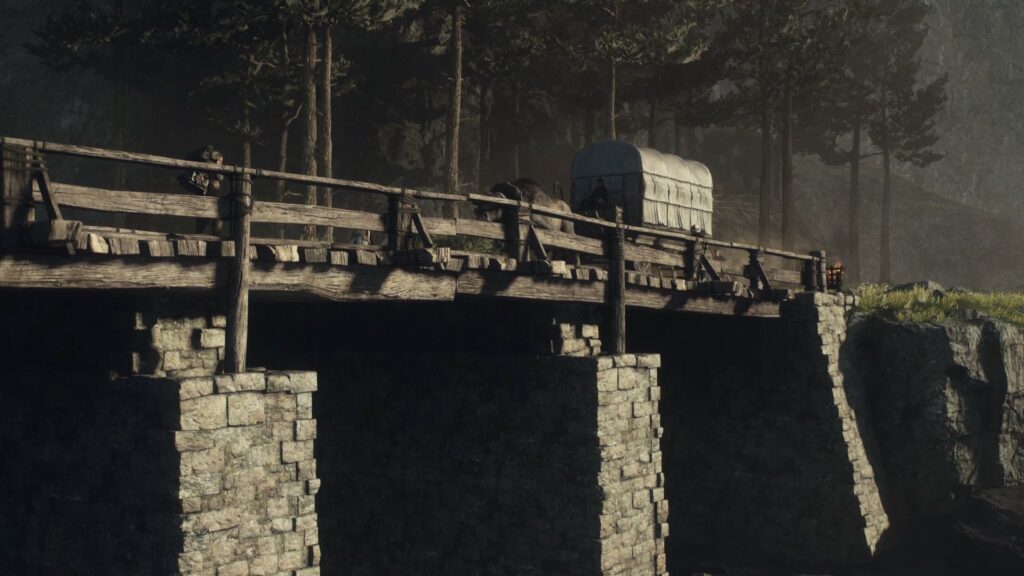
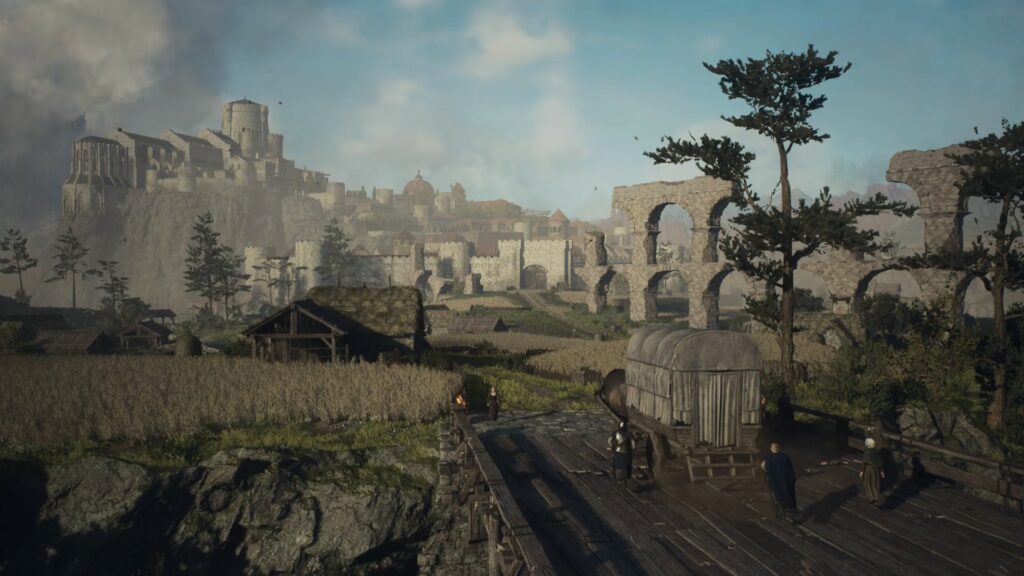
Luckily once on the Ox Carts you can sit and wait while it moves across the map, or ‘Doze Off” essentially activating the Fast Travel Option. This isn’t foolproof however as your Ox Cart can get attacked by monsters or bandits and you’ll have to defend it else it get destroyed and leave you stranded to walk the rest of the way.
The second and far faster method is the use of Ferry Stones and Portcrystals. Portcrystals come in two varieties in Dragon’s Dogma 2, those that are found in certain settlements and cannot be moved, and the portable versions the player can move and set wherever they want. Once set or found these crystals can be teleported to using Ferry Stones. Portcrystals can be acquired through various quests as rewards or can be found through exploration, usually behind larger overworld bosses. These portable Portcrystals are rare but quite useful. The controversy over Dragon’s Dogma 2’s microtransactions stems from a misconception about these Portcrystals which will be covered at the end.
To use these Portcrystals however, the player needs to use a very rare consumable item called Ferry Stones. These too can be found as Quest rewards, as loot very rarely, and in certain shops. These Ferry Stones are consumed on use and are very expensive and hard to acquire. These are not purchasable and must be found in the game as well, and are the only way to fast-travel outside of Ox Carts.
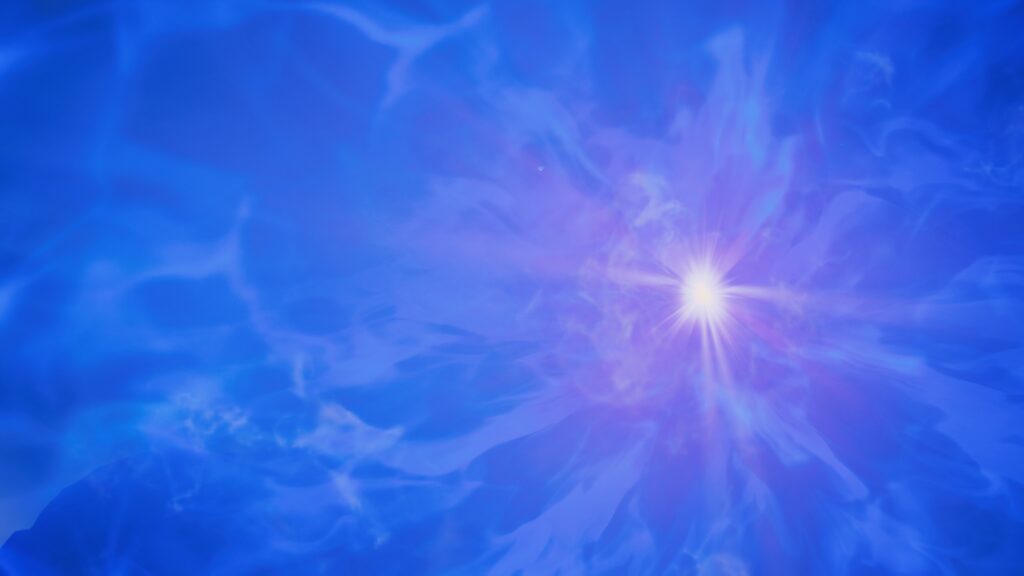

On The Road Again
With the features of fast travel described, how does it feel to play in Dragon’s Dogma 2’s open world? The main thing is that you would expect all the walking and slower travel to get annoying, and while some people may find it tedious, I thoroughly enjoyed it. While it won’t be everyone’s cup of tea, I loved getting lost in the wilderness early on, fighting my way back to town trying to survive, and journeying down random dirt roads and caves.
Later, in the second region of Dragon’s Dogma 2, I did get thoroughly annoyed with just the ridiculous number of random groups of monsters. In the Battahl region, you cannot go 10 meters without encountering a wandering pack of Mobs, and the nightie is doubly as bad. Sometimes when I was on a quest and I had to move across the desert, I just wanted to run through unbothered. While I do love that they tried to make the world feel alive, this is where it went overboard, and traveling became such a hassle.
This, coupled with some quests needing a lot of running back and forth in this region, made the length of this game quite a bit tedious. Even the main roads were infested with enemies and I felt a bit discouraged to try and explore because of how tedious traveling could be at times. This coupled with the lack of permanent Portcrystals in the area makes it difficult to travel through. However, what was the saving grace of all the running around was how much fun I had fighting the enemies I encountered.
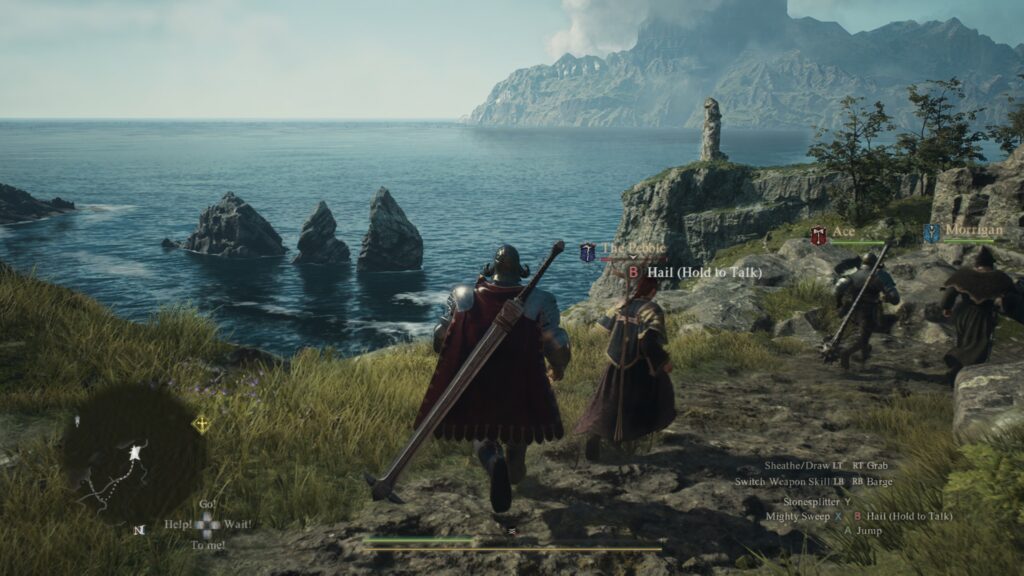

Combat
The best thing by far about Dragon’s Dogma 2 is the combat system. I’ve not had more fun fighting and taking down monsters in such a long time. While not surprising because Dragon’s Dogma 2 and Monster Hunter both fall under Capcom’s wheelhouse, the combat systems are very similar ones I love. Dragon’s Dogma 2’s combat system is very much a fast-paced action combat system and plays smoothly with an emphasis on team composition and positioning rather than precise timing and dodge-rolling. This is a breath of fresh air in a time where every game is trying to be the “next souls-like” game.

Might and Magick
Combat in Dragon’s Dogma will feel drastically different depending on what vocation you’re playing. I enjoy being on the front lines and up in the action. One of my favorite classes to play is the great sword-wielding Warrior vocation. However, if you want to stand back and barrage the enemy with area-of-effect magic spells or dish out damage with volleys of arrows, you can play like that as well. Each Vocation plays so differently from each other it becomes so refreshing to swap and try new things.
Team composition is everything, and you need a balance of front liners and damage dealers. Additionally, the Mage class is almost essential due to it being one of the few ways of gaining any sort of healing in this game. The versatility of combat and how to approach your team composition is fun, and you can sculpt your playthrough to fit however you want to play.
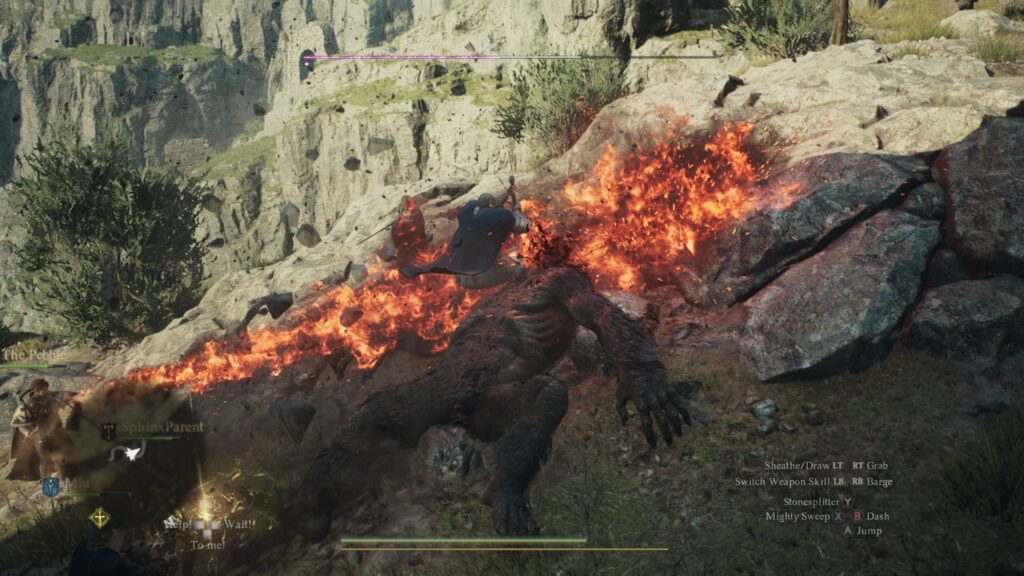
The Bigger They Are
Now the main reason why I love Dragon’s Dogma 2, is the big battles. For a lot of the game, you’ll be running into small groups of monsters, reskinned goblins, skeletons, and bandits for a lot of it. What I loved was rounding a corner or entering a cave and finding a giant monster with multiple health bars, climbing on them, and bringing them down. This doubled with the fact that enemy variety is not amazing, I started looking forward to running into giants, griffins, and even hunting down the Medusa from the intro.
I would go out of my way to hunt down these large beasts, even following a griffin for 20 minutes to fight it. I would say my best experiences are when one fight would continuously roll into other monsters, and drag in a cyclops, griffins, and all manner of creatures. On top of that, grabbing onto any flying enemy and being flown across the map must be one of the most epic moments in any game I’ve played for a long time. This is where Dragon’s Dogma 2 really shines, the combat.
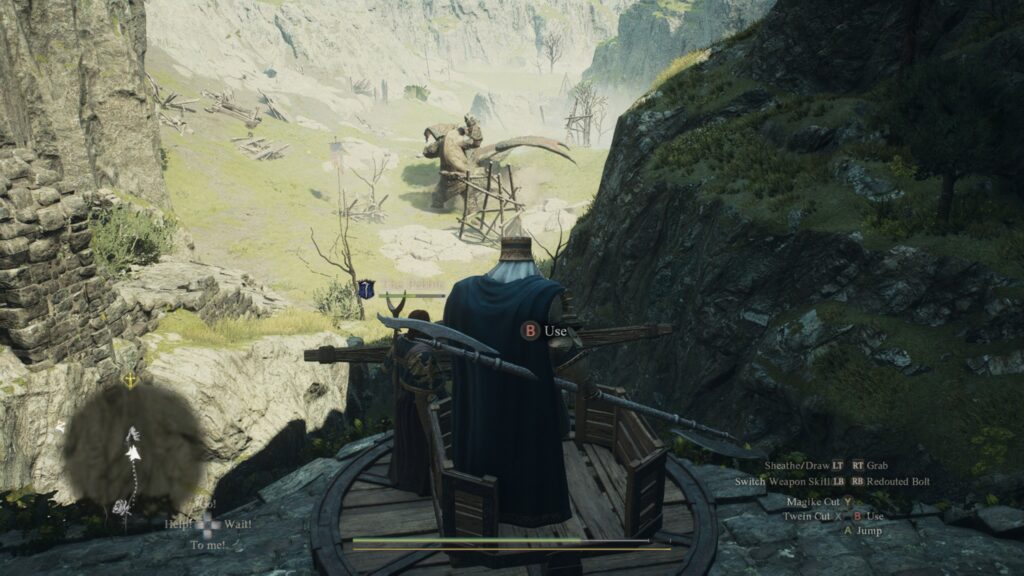
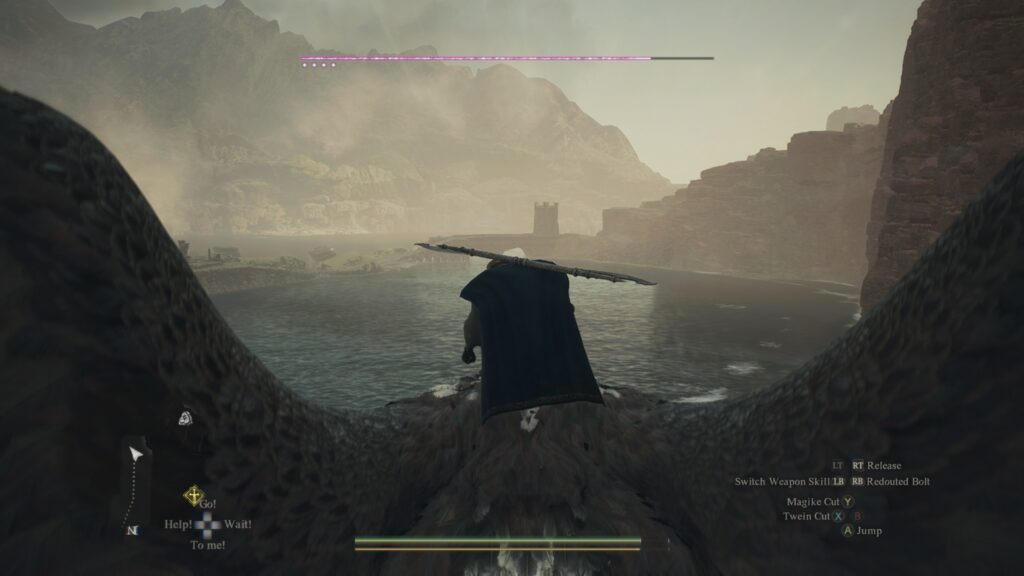
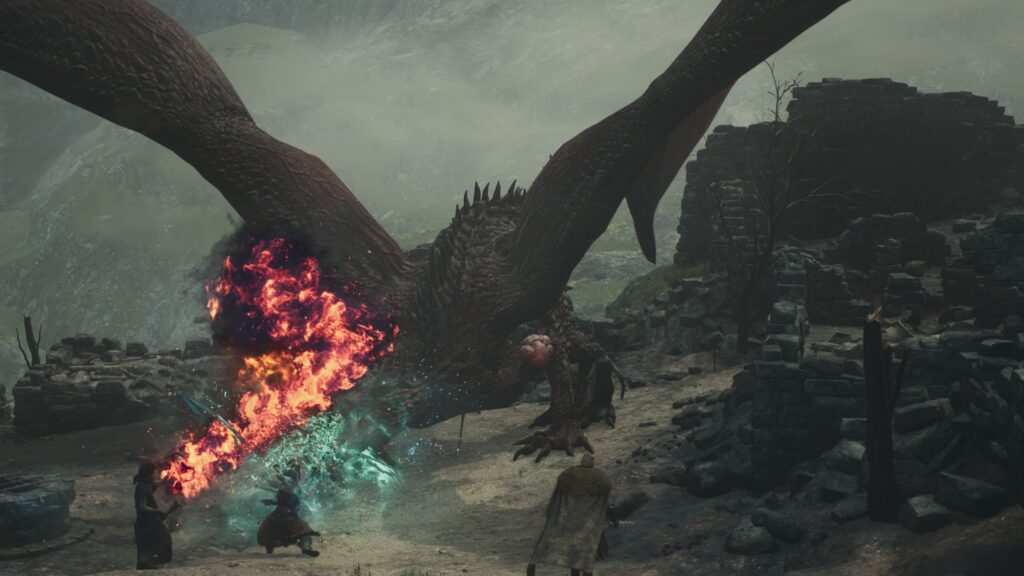

The Micros
Before concluding, there’s the small issue of the drama around the microtransactions. I’ll keep this short though. The biggest confusion at the start was that you had to purchase fast travel. This is not the case. What you’re able to purchase are the portable Portcrystals that can be placed down anywhere to teleport to. These items are still able to be found in the game and you still need the Ferry Stones to teleport, and those you cannot purchase. Almost everything that can be purchased is found in-game, and none of it is even remotely necessary to enjoy Dragon’s Dogma 2.
While the above is true, I do feel that a full game released with these microtransactions is in poor taste on its own. I understand having cosmetics or small bonuses later in the years to keep up server costs, but having these quality-of-life purchasable items leads you to wonder what gameplay features are they sacrificing to make these transactions more enticing. And in that line of thought, why not just improve the overall quality of the game or have customizable settings, instead of potentially sacrificing the gameplay experience?

The Verdict
Dragon’s Dogma 2 is all in all an amazing game. It has stellar combat moments and makes the world feel alive. The combat is fast-paced and always exciting, and I personally enjoy the curated open world that they have designed. This however is not without its faults.
There are gaps in the story that I feel show a lack of attention, the side content is a bit lacking, and the enemy variety for a game so heavily focused on combat is quite poor. Where Dragon’s Dogma shines, it shines bright, but there are some issues with the overarching design and I wish there could have been some more detail. Even so, I had a great time playing and look forward to playing more, and recommend this game to anyone who loves RPGs or anyone who just wants to beat up some monsters.
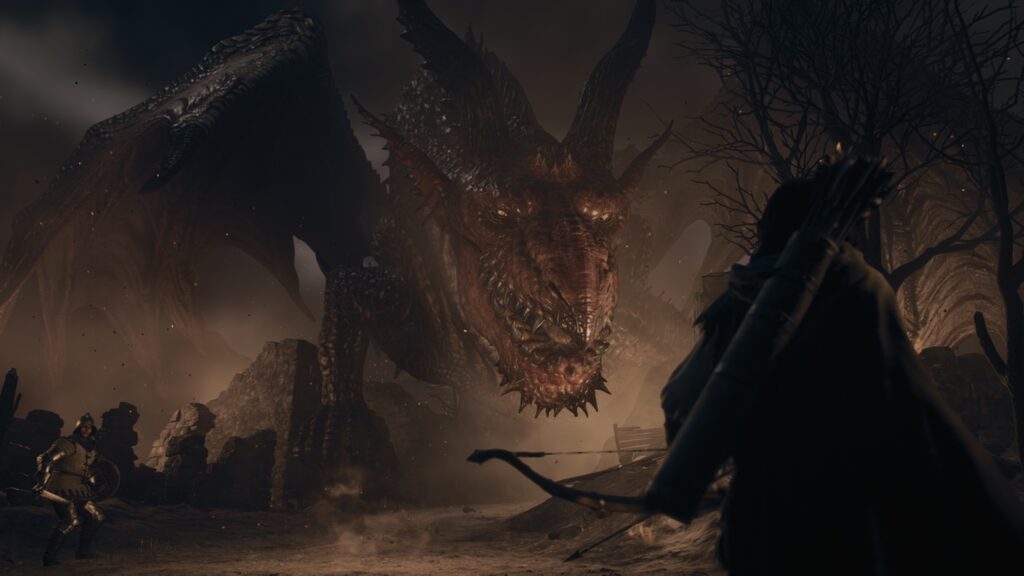
Special thanks to CD Media for allowing us to cover Dragon’s Dogma 2
